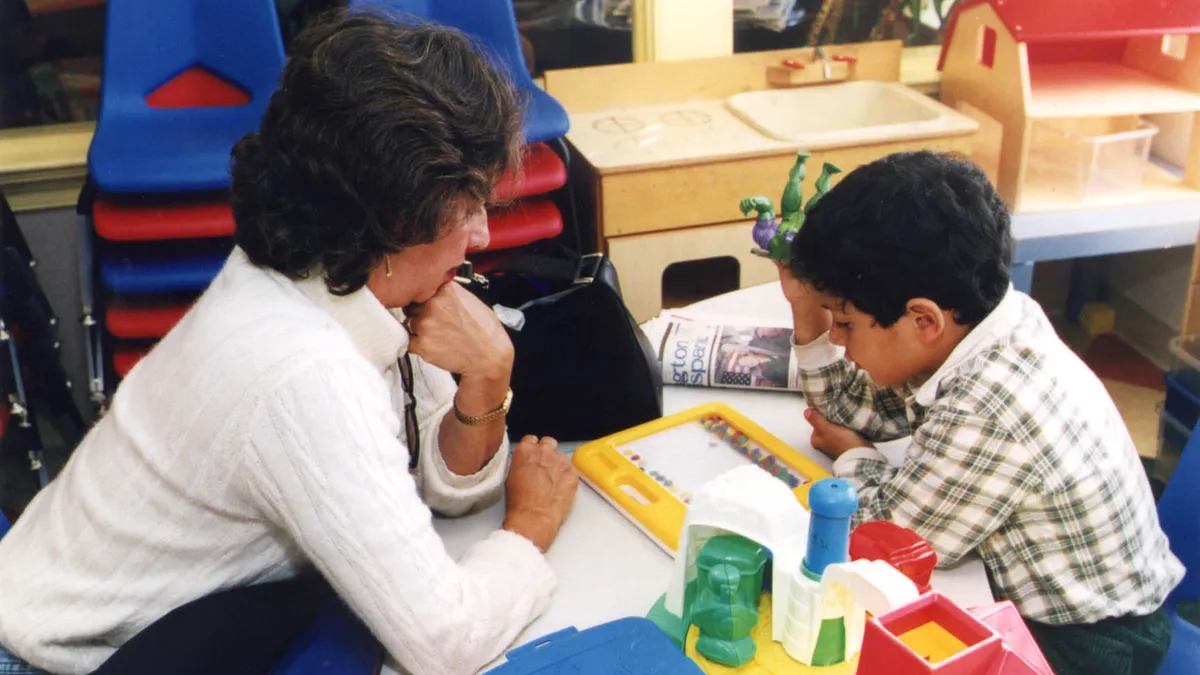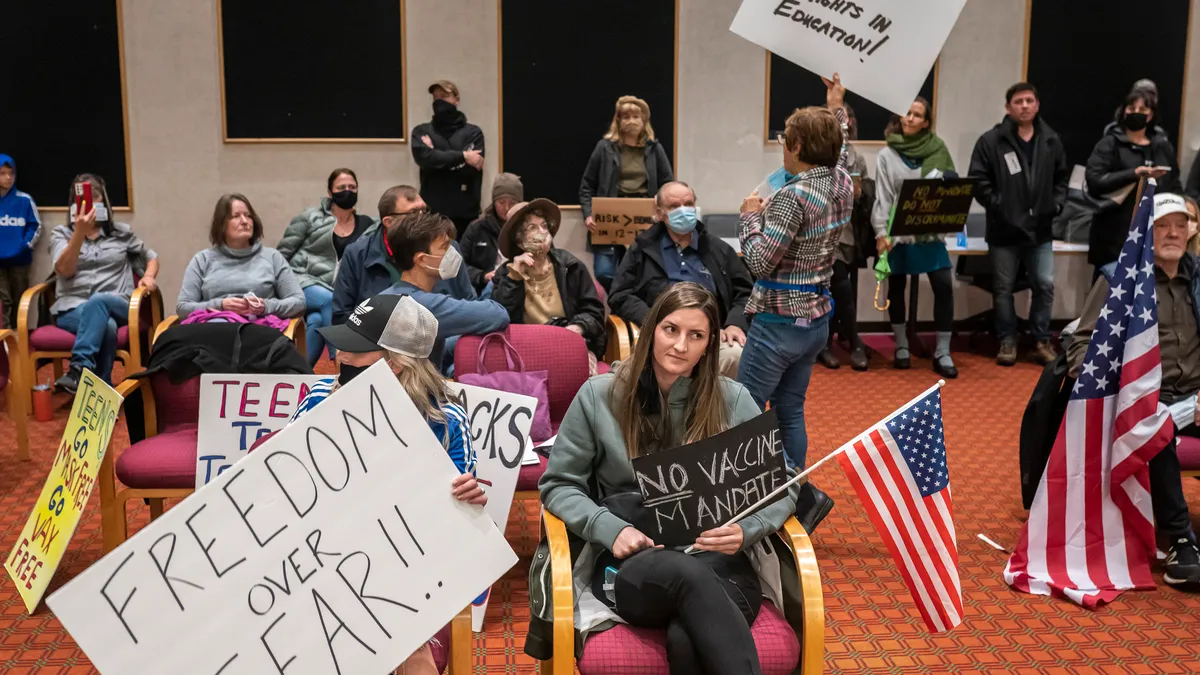Dive Brief:
-
For Boston's Dr. William W. Henderson Inclusion School, which is focused on serving students with disabilities, building a strong school-parent partnership is key to maximizing the benefits for this student population, Education Week reported.
-
Henderson Director of Lower Campus Amy Gailunas said the first step to creating this environment is establishing trust and collaboration, followed by making sure students get the therapies they need inside the classroom — rather than taking them elsewhere — and allowing for flexibilities and treating staff and parents as equals.
-
However, some say there’s another necessary piece of the puzzle in securing sufficient funding. If Congress puts more money into the Individuals with Disabilities Education Act (IDEA) and takes some of the burden off local districts, one Henderson parent told Education Week, more children will have their needs met.
Dive Insight:
Maintaining an open line of communication between teachers and parents is important for any student. But it’s even more crucial for special education students, who may require individualized needs and learning plans. Oftentimes, a student's parents know their child best and have the best grasp of their strengths, challenges and what they need to succeed. But if parents or guardians are alienated from the process, teachers won't have this valuable knowledge and input, and they likely won't be able to maximize their effectiveness in the classroom.
In addition to teachers, administrators need to have a clear understanding of what their schools and students need. If they don’t, they won’t know what resources to invest in or secure, and the success of students — especially those with disabilities, who may have more specific needs — is put in jeopardy.
Special education law is complex, and in order to ensure a school is compliant, a principal must be familiar with federal requirements, their role in the individualized education program (IEP) process, and how to support teachers and parents in educating students with disabilities. A big chunk of that starts with building relationships with parents, who want to know a school has their child's best interests at heart.
As mentioned above, other pieces of the puzzle need to come through to improve the special ed system. As it stands, some key pieces of the system are lacking: For one, the number of special ed teachers has dropped nearly 20% nationally over the past decade, and on top of that, most states may not be adequately preparing the special ed teachers they do have to teach reading.
As a result, many districts struggle to comply with IDEA, which most of the time requires that a student with a disability be taught by a certified special ed teacher. That means special ed students aren't receiving an education that fits their needs, as well as a risk of legal action against the districts where this resource gap exists.
At the end of the day, all students — regardless of whether they have a disability — deserve the access to a quality education that will help them to succeed. Connecting to parents has proven to be an important piece in getting to know a child with disabilities and what additional help they might need in the classroom. In addition, this communication and collaboration can also help schools maximize their resources for those who need it while also ensuring that outside factors don't improperly land certain student populations in special ed.






 Dive Awards
Dive Awards






